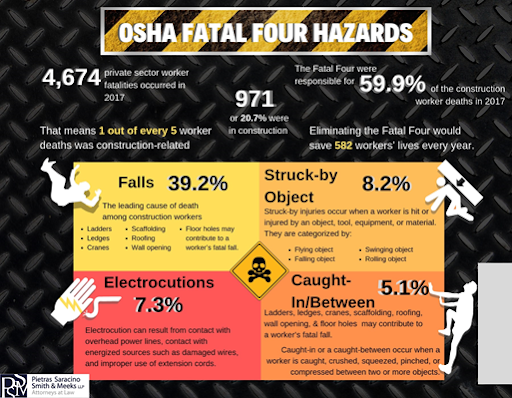Construction sites are one of the most dangerous places to work. Even with the slightest error, workers can suffer injuries and even fatalities.
According to the statistics for 2021, the construction industry ranks fourth in terms of the highest number of fatalities.
So, how can you maintain safety at your workplace?
The answer lies in following the Occupational Safety and Health Administration (OSHA) guidelines and training employees to do the same. OSHA Construction Training can help your workers learn and follow the safety guidelines to keep themselves and others safe from all kinds of workplace hazards.
It’s the responsibility of the site managers to understand the common hazards in the construction industry and take appropriate measures to prevent them.
The 2021 statistics reveal that:
- At least 1 out of 5 employees dies due to construction work.
- OSHA’s maximum penalty for safety violations can range from $13,653 to $13,6532.
- Construction injuries and accidents caused an estimated $2.5 billion in worker’s compensation.
- According to OSHA, construction safety training can save at least $4 to $6 for every $1 invested.

To prevent accidents at the workplace and to avoid legal liabilities, employers should administer OSHA training courses. But before you invest time and effort in training, it’s important to know what OSHA Construction Training is, its importance, benefits, and the legal requirements.
What Is OSHA Construction Training?
An OSHA Construction Training Program is a compliance program that educates workers on the health hazards and safety practices on construction sites.
The U.S. Congress took the initiative to protect employees’ health and safety, which led to the creation of a public health agency known as the Occupational Safety and Health Administration (OSHA).
The standards laid out by OSHA require workers to be trained on workplace injuries and hazards.
The site managers/employers need to train the employees (construction workers) on job-specific safety concerns.
Watch: What Is OSHA Compliance Training? Requirements & Benefits
There are two OSHA Construction safety courses – a 10-hour and 30-hour training course that you can deploy to train your employees.
The 10-hour OSHA outreach course is designed for entry-level workers. It mainly covers the OSHA regulations that apply to the construction industry.
The 30-hour course is for the supervisory level, and it offers more significant insights into safety hazards than the 10-hour training program.
 Tips
Tips
We’d love to hear your tips & suggestions on this article!
Get Free Employee Training Software — All Features, Forever.
We've helped 567 companies train 200,000+ employees. Create courses in under a minute with our AI LMS or use 200+ ready-made courses on compliance, harassment, DEI, onboarding, and more!

 We'd love your feedback!
We'd love your feedback! Thanks for your feedback!
Thanks for your feedback!







